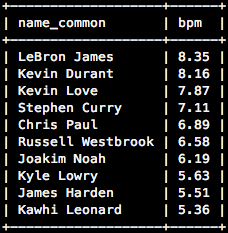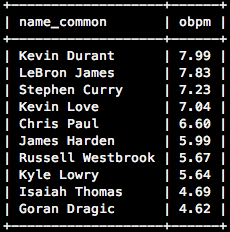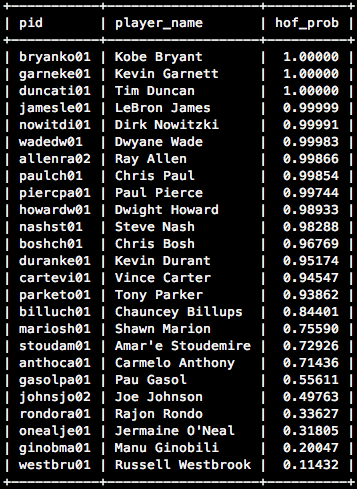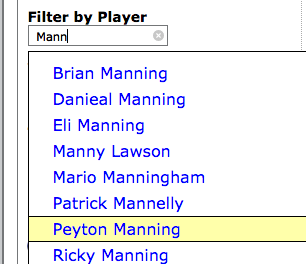Introducing Box Plus/Minus (BPM)
29th October 2014
We're excited to introduce our newest statistical feature, Box Plus/Minus (BPM), developed and shared by Daniel Myers, well known as an administrator of the APBRmetrics forum and the developer of Advanced Statistical Plus/Minus (ASPM), which has performed very well empirically and to which BPM now serves as successor.
BPM is an advanced stat intended to measure a player's total contribution, calculated using box-score data that's available going back to the 1973-74 season. It follows on work done toward the Statistical Plus/Minus (SPM) concept, and ASPM, and uses long-term data sets developed by Jeremias Engelmann, the creator of ESPN's Real Plus/Minus statistic. Please visit Daniel's write-up to read more about the development of BPM, the background of the concept, and everyone that's contributed to the research.
BPM is presented intuitively, representing points per 100 possessions for which the player was on the court. For example, a player with a +4.3 BPM is said to have contributed 4.3 more points than an average player over 100 possessions, based on measurable statistical output from game box scores. The calculation makes heavy use of context dependent box score stats like USG%, TS%, STL% and others (as well as the statistical interactions between these components). We publish these as Advanced Box Score Stats and you can read about these component calculations in our glossary. Note that there is a separate calculation for the offensive component of a player's BPM, which yields both OBPM (Offensive Box Plus/Minus) and DBPM (Defensive Box Plus/Minus).
Further, BPM is scaled so that -2.0 represents a theoretical "replacement level" - thus, this concept is easily extended to permit calculations of one player's value over that theoretical threshold - that formula is [BPM - (-2.0)] * (% of minutes played), which is VORP, and interpreted as per 100 team possessions.
We'll be presenting BPM, it's offensive and defensive components, as well as VORP in the 'Advanced' table of our player pages, and likewise in our team pages:

For 2014, the leaderboards for BPM, OBPM, and DBPM, respectively, look like the following (> 1,000 MP):
And as the season gets underway, you'll be able to find BPM and its components, as well as VORP, on our actual leaderboard as well as other site features like the Play Index tools and season registers.
Posted in Announcement, Basketball-Reference.com, CBB at Sports Reference | 3 Comments »










 We've added a text input to the top of the
We've added a text input to the top of the 
We're Social...for Statheads
Every Sports Reference Social Media Account
Site Last Updated: Friday, May 1, 2:56PM
Question, Comment, Feedback, or Correction?
Subscribe to our Free Email Newsletter
Do you have a sports website? Or write about sports? We have tools and resources that can help you use sports data. Find out more.